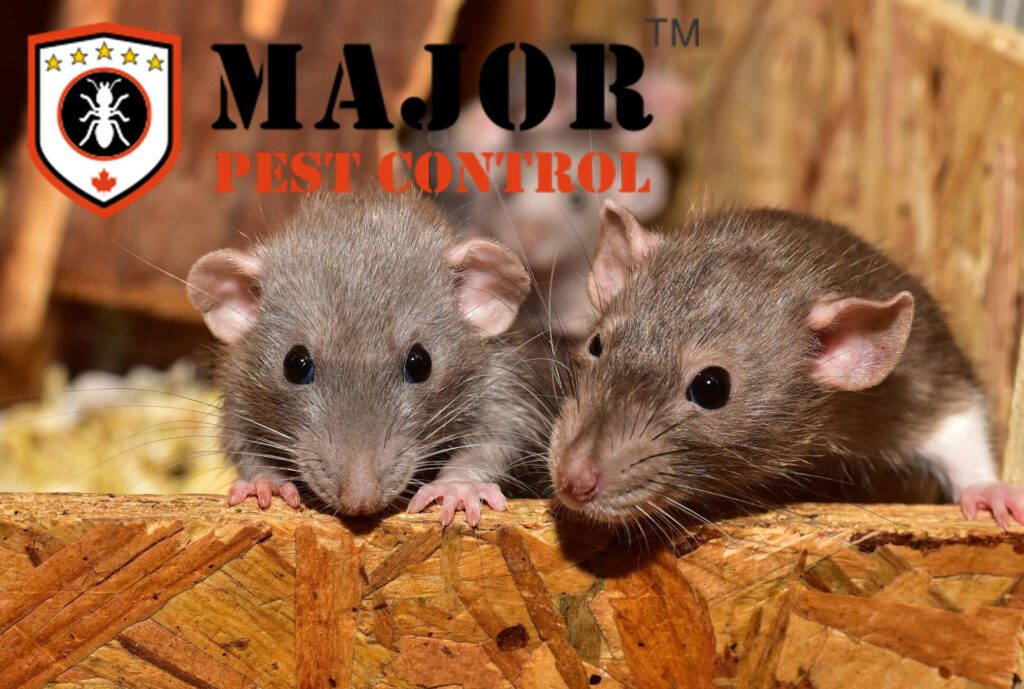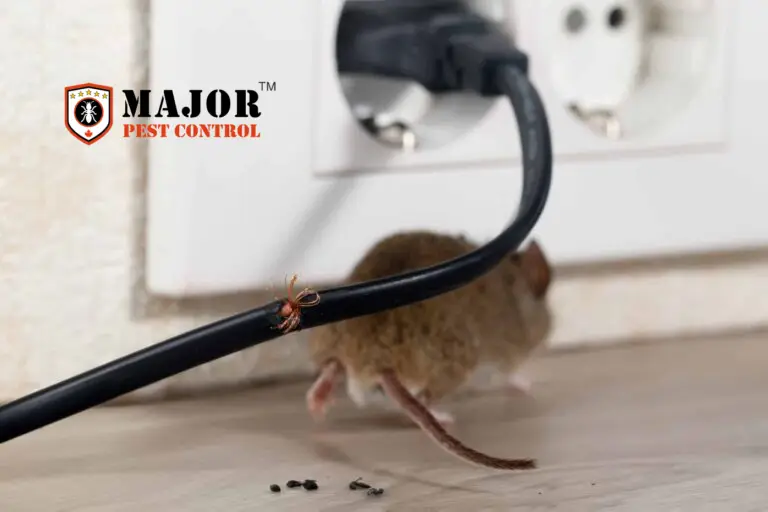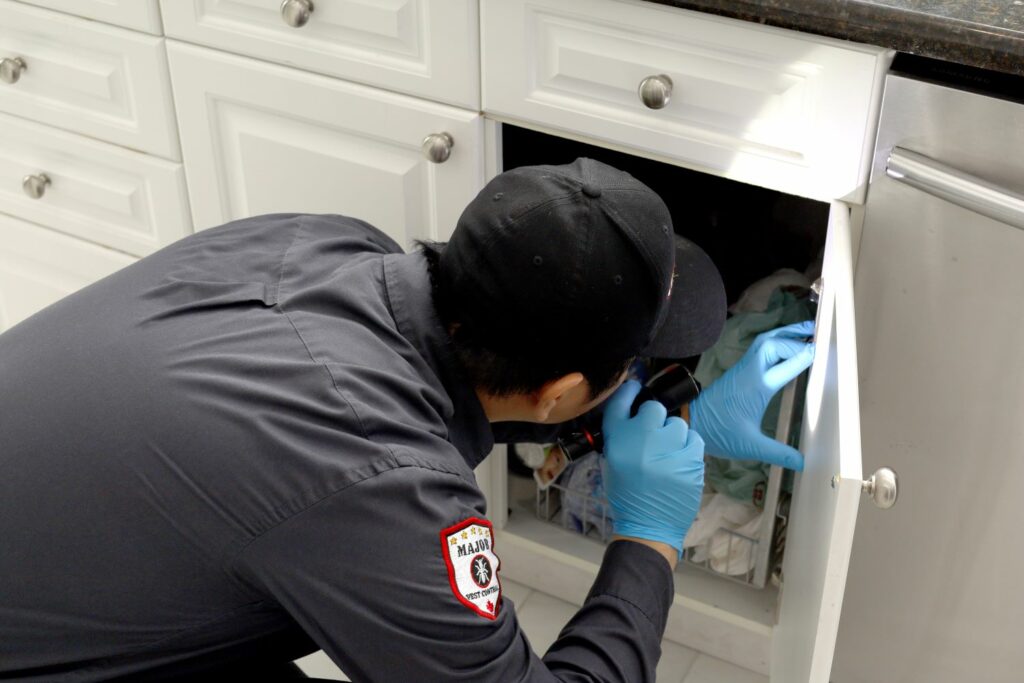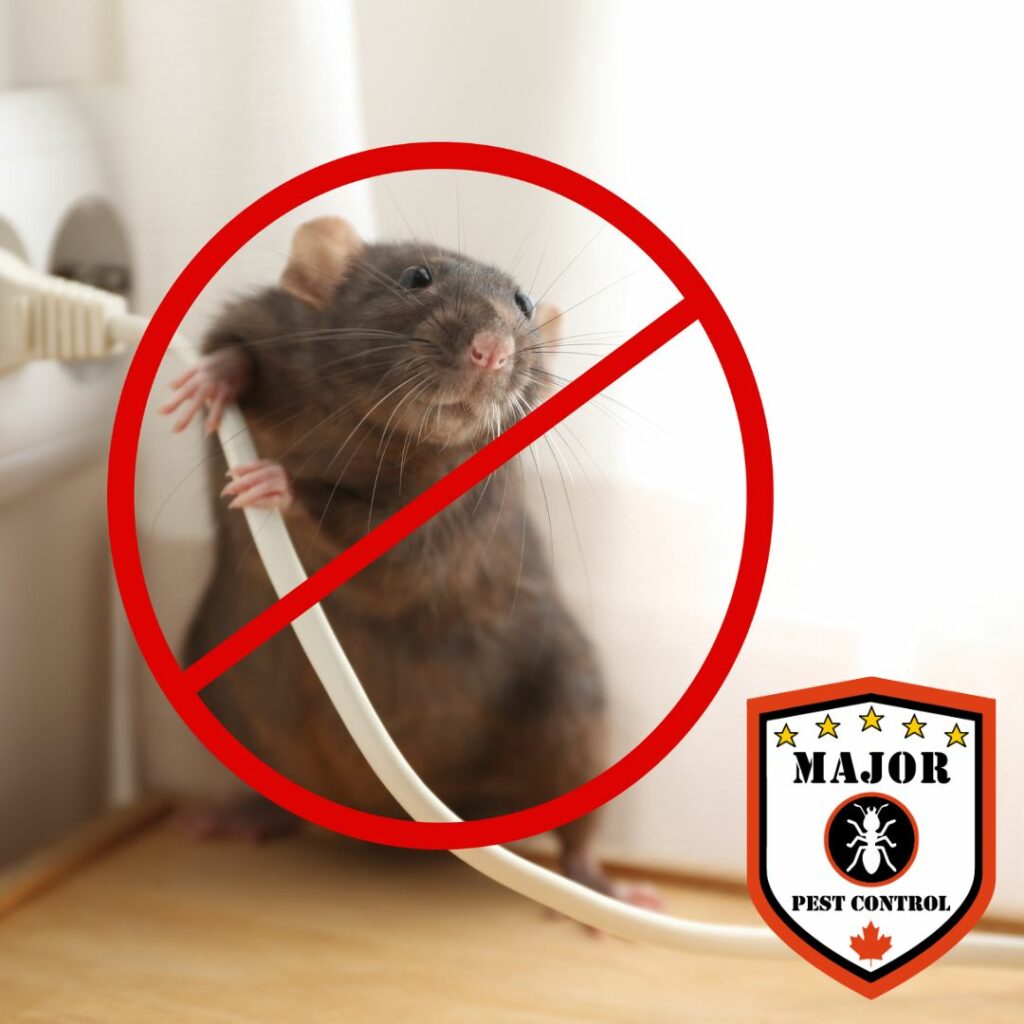No Mouse In This House: A Homeowner’s Guide to Mouse Control
Jun Buhkt, Associate Entomologist, Major Pest Control
Chapter 1: Understanding Mice
1.1 Types of Mice
In Canada, the most common types of mice found in homes are the House Mouse and the Deer Mouse. Here’s how to identify each:
- House Mouse: This mouse is small, with light brown to gray fur and a lighter-colored underbelly. It has large ears and a long, hairless tail.
- Deer Mouse: Slightly larger, with white feet and a tail that’s dark on top and light on the underside. Deer mice tend to be found more often in rural and wooded areas but can still invade homes.
1.2 Why Mice Invade Homes
Mice seek food, warmth, and shelter, particularly during colder months. They can enter through gaps as small as a quarter inch, making it easy for them to access homes. Once inside, they reproduce quickly, turning a small problem into a large infestation in no time.
1.3 Signs of a Mouse Infestation
Being vigilant about potential signs of mice can help you detect an infestation early. Key indicators include:
- Droppings: Small, black pellets near food sources or in hidden places.
- Gnaw Marks: Mice will chew through walls, wires, and packaging to get to food.
- Nests: They build nests using soft materials like shredded paper, insulation, and fabric.
- Sounds: Scratching or scurrying sounds, particularly at night, in walls or ceilings.
Chapter 2: Preventing Mice from Entering Your Home
2.1 Sealing Entry Points
- Inspect and Seal Cracks: Check for cracks and holes around the foundation, walls, windows, and doors. Use caulk, steel wool, or hardware cloth to seal any gaps.
- Weatherproof Doors and Windows: Ensure all doors and windows close tightly. Install weather stripping where needed and repair any damaged window screens.
- Maintain Vents and Chimneys: Cover vents with fine mesh and ensure chimneys have caps.
2.2 Removing Attractants
- Store Food Properly: Use sealed containers for all pantry items, and avoid leaving pet food out overnight.
- Declutter: Mice love cluttered areas where they can hide. Keep storage spaces like basements, attics, and garages organized and free of debris.
- Dispose of Trash Properly: Store garbage in tightly sealed bins and remove it from your home regularly.
2.3 Yard Maintenance
- Keep Landscaping Tidy: Trim back shrubs and bushes from your home’s foundation to reduce potential hiding places.
- Store Firewood Away from Your House: Firewood piles can attract mice, so keep them at least 20 feet away from your home.
- Maintain Proper Drainage: Ensure that water doesn’t collect near your home’s foundation. Mice are often attracted to moisture.
Chapter 3: Natural Mouse Control Methods
3.1 Peppermint Oil and Other Natural Repellents
Mice are repelled by strong smells like peppermint oil. Soak cotton balls in peppermint oil and place them in areas where you suspect mice may be entering. Replace the cotton balls every few days for maximum effectiveness.
3.2 Use of Sound Repellents
Ultrasonic pest repellents emit high-frequency sounds that are unpleasant for mice. Place these devices in areas where you’ve noticed mouse activity. However, while sound repellents can be helpful, they are often best used in combination with other methods.
Chapter 4: Traditional Mouse Control Methods
4.1 Snap Traps – Recommended
Snap traps are effective and humane when used correctly. Place traps along walls and in areas where you’ve noticed droppings or other signs of mice. Best bait options include peanut butter, cheese, or bits of chocolate.
4.2 Glue Traps – Not Recommended
Glue traps work by trapping mice on a sticky surface. While they are inexpensive and easy to use, they can be less humane, as mice may suffer. We DO NOT recommend using glue traps for mice. Ensure these traps are out of reach of children and pets.
4.3 Live Traps – Recommended
Live traps capture mice without killing them. After catching a mouse, release it at least a mile away from your home to prevent it from returning.
Chapter 5: Professional Mouse Control
5.1 When to Call a Professional
While DIY methods can be effective for small infestations, larger infestations may require professional intervention. Call a pest control expert if:
- You’re noticing consistent mouse activity despite using traps and deterrents.
- You’ve found significant structural damage or chew marks on electrical wires, which could pose fire risks.
- You’re dealing with a suspected rat infestation, which often requires specialized techniques.
5.2 What to Expect from Professional Pest Control
Professional exterminators can perform a thorough inspection of your home, locate entry points, and use industrial-grade products to eliminate the infestation. Many pest control companies also offer ongoing maintenance plans to help prevent future infestations.
Chapter 6: Safe Mouse Control Practices
6.1 Handling Traps
Always use gloves when handling traps or disposing of dead mice to avoid contact with potentially harmful bacteria.
6.2 Cleaning Up After an Infestation
Mice can carry diseases, so it’s important to clean thoroughly after an infestation. Follow these steps:
- Wear Gloves and a Mask: Mice droppings and urine can contain pathogens.
- Dispose of Droppings and Nests Safely: Use disposable bags and disinfect the area with a bleach solution.
- Sanitize the Area: After removing droppings, sanitize all affected surfaces and air out the room.
6.3 Preventing Future Infestations
Even after an infestation is cleared, continue with preventative measures. Regularly inspect your home, and follow best practices for sanitation and sealing entry points. Ongoing vigilance is key to keeping mice at bay.
Chapter 7: Myths About Mice
7.1 Myth #1: Cats Will Keep Mice Away
While it’s true that cats can catch mice, they may not always be effective for large infestations. Additionally, mice may hide in areas that cats cannot access.
7.2 Myth #2: Mice Only Invade Dirty Homes
Mice are opportunistic and will enter clean homes if food and shelter are available. Regular cleaning helps, but other preventative measures are essential.
7.3 Myth #3: Mice Are Solitary Animals
Mice are social creatures and tend to live in groups. If you see one mouse, it’s likely there are more.
Take Appropriate Steps To Keep Mice Out Of Your House
Keeping mice out of your home requires a combination of preventive measures, natural deterrents, common mouse traps, and professional intervention when necessary. By sealing entry points, reducing attractants, and staying vigilant, you can maintain a mouse-free home. Remember, regular inspection and maintenance are key to long-term pest control success.
If you’re dealing with a persistent or large-scale infestation, don’t hesitate to reach out to a professional like Major Pest Control. Their team of experts can help secure your home and provide you with peace of mind. Major Pest Control serves clients in Edmonton, Calgary and Red Deer.
This guide is designed to empower homeowners with knowledge about effective mouse control methods. By following these steps, you can make your home inhospitable to mice, safeguarding your property and family from the risks associated with infestations.
Download Or Print This Free Mouse Control Guide (PDF)
Click the button below. This will open up a pdf of the article above in a separate tab.
We Strive For 5 Star Reviews!







